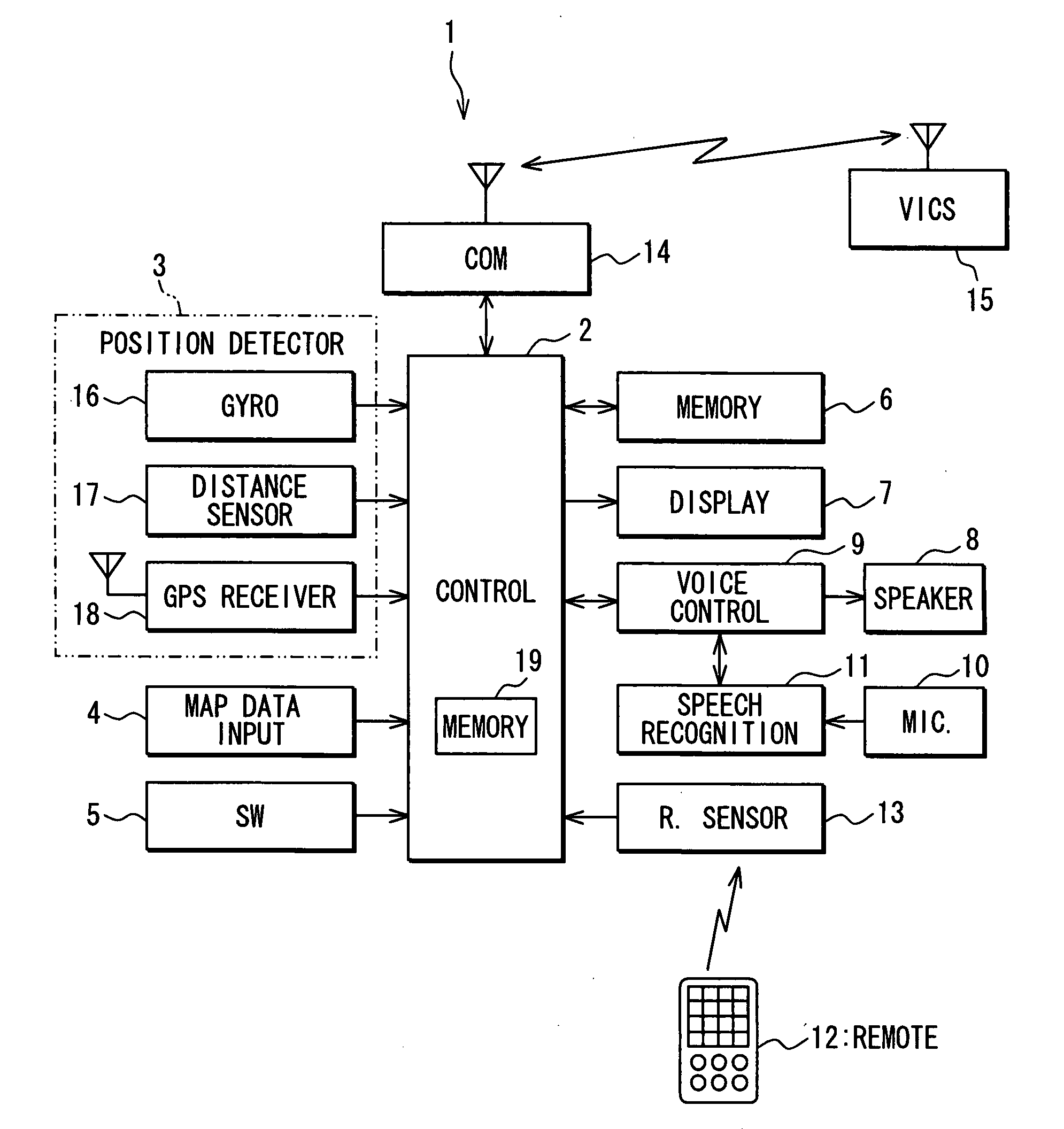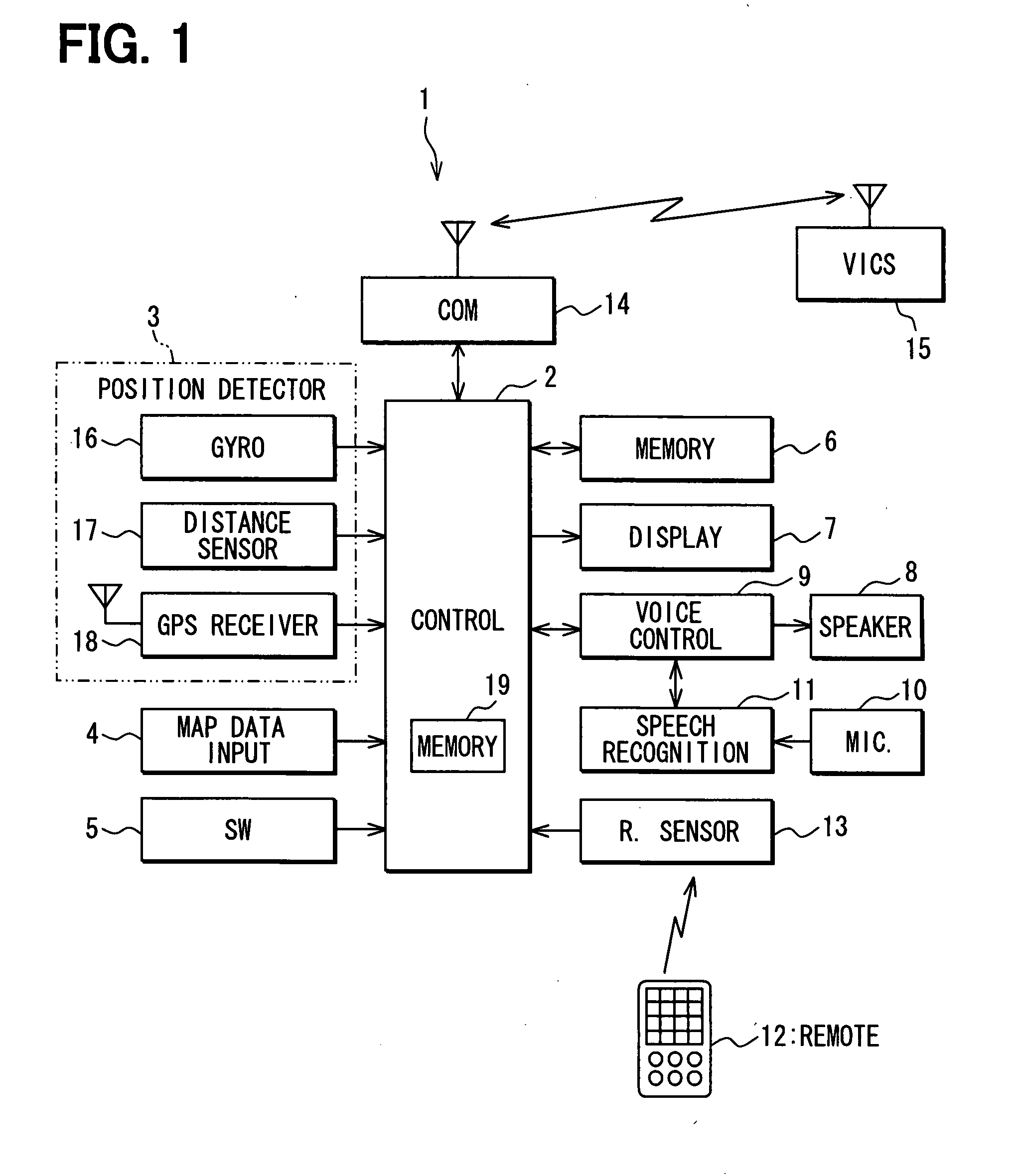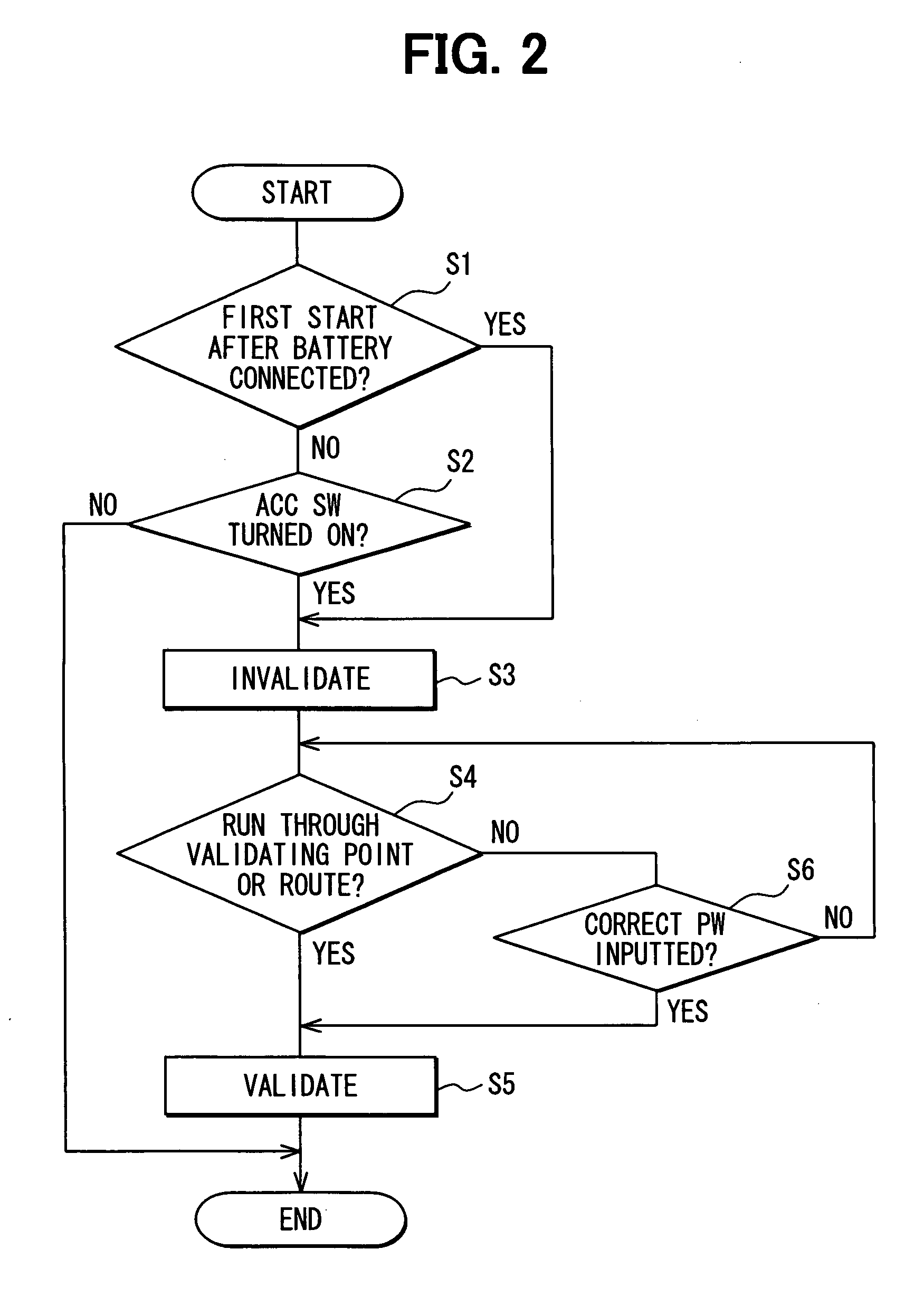Navigation apparatus
- Summary
- Abstract
- Description
- Claims
- Application Information
AI Technical Summary
Benefits of technology
Problems solved by technology
Method used
Image
Examples
first embodiment
[0020]A navigation apparatus 1 mounted in a subject vehicle will be explained below as an embodiment of the present invention. As shown in FIG. 1, the navigation apparatus 1 includes a control unit 2 mainly having a micro-computer; a position detector 3 detecting a current position of the vehicle; a map data input unit 4, an operation switch group 5; an external memory device 6; a display unit 7 having liquid crystal color display; a voice controller 9 connected with a speaker 8; a speech recognition unit 11 recognizing speeches from a microphone 10; a remote sensor 13 communicating commands or the like with a remote 12; and a communications unit 14 as an external information input / output unit to perform data communications by wireless with an outside information center 15 (e.g., VICS (Vehicle Information and Communication System) center (Trademark)).
[0021]The position detector 3 includes a gyro scope 16 detecting a vehicle's rotational angular speed; a distance sensor 17 detecting ...
second embodiment
[0045]FIG. 4 is similar to FIG. 2 to illustrate a function control process performed by the control unit 2 in a second embodiment when the navigation apparatus 1 is supplied with the power from an in-vehicle battery. Steps in FIG. 4 identical to those in FIG. 2 are assigned the same step numbers. Step S11, Step S12, Step S13 are new steps included in the process in the second embodiment. The control unit 2 of the second embodiment does not invalidate the predetermined function until a predetermined grace period elapses from the start-up; therefore, the navigation apparatus 1 continues the normal operation during the grace period.
[0046]Just after Step S2 is performed, the control unit 2 does not perform Step S3 for invalidating the function but, alternatively, Step S11 for starting a timer (i.e., starting counting of the timer) to count the grace period (e.g., tem minutes). Then, when both the determinations at Step S4 and Step S6 are negated (i.e., when the vehicle has not traveled ...
third embodiment
[0049]FIG. 5 is similar to FIG. 2 to illustrate a function control process performed by the control unit 2 in a third embodiment when the navigation apparatus 1 is supplied with the power from an in-vehicle battery. Steps in FIG. 5 identical to those in FIG. 2 are assigned the same step numbers. Steps S21, S22, S23, S24 are new steps included in the process in the third embodiment. The control unit 2 of the third embodiment does not invalidate the predetermined function until a predetermined permission period elapses from when the vehicle travels through the invalidating route or invalidating point, irrespective of whether the navigation apparatus 1 is started up or not; therefore, the navigation apparatus 1 continues the normal operation during the permission period.
[0050]Before the determination for the start-up at Steps S1, S2, the control unit 2 determines whether a timer for counting the permission period is operating (Step S21). When the timer is determined not to be operating...
PUM
 Login to View More
Login to View More Abstract
Description
Claims
Application Information
 Login to View More
Login to View More - Generate Ideas
- Intellectual Property
- Life Sciences
- Materials
- Tech Scout
- Unparalleled Data Quality
- Higher Quality Content
- 60% Fewer Hallucinations
Browse by: Latest US Patents, China's latest patents, Technical Efficacy Thesaurus, Application Domain, Technology Topic, Popular Technical Reports.
© 2025 PatSnap. All rights reserved.Legal|Privacy policy|Modern Slavery Act Transparency Statement|Sitemap|About US| Contact US: help@patsnap.com



